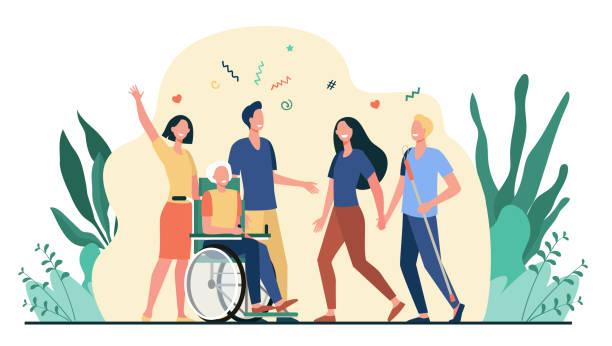Amyotrophic lateral sclerosis, or ALS, is a progressive disease of the nervous system that affects nerve cells in the brain and spinal cord, causing loss of muscle control. It is often called Lou Gehrig’s disease after the baseball player was diagnosed with the disease. Doctors usually don’t know why ALS occurs. Some cases are hereditary. ALS often begins with muscle twitching and weakness in a limb or difficulty speaking. Eventually, it affects the control of the muscles needed to move, speak, eat, and breathe. There is no cure for this deadly disease, but we can improve the quality of life of those who suffer from it. Therefore, here we will talk about one Amyotrophic Lateral Sclerosis Tool: Text-To-Speech.
The Importance Of Talking About Communication When We Talk About ALS
ALS can alter muscle control and affect the physical aspects of speech, presenting different challenges for personal communication. Family and friends can help compensate for your speech difficulties. They can explain to others that you need more time to respond, but that you understand everything and they should include you in the conversations. In addition, to insist on the importance of being direct and sincere. Since people in your family circle are more used to listening to you, they may be able to “translate” what you say to others. However, even those closest to you may have difficulty understanding you on occasion and it is important that you can have your autonomy when communicating with others. Without a doubt, you more than anyone know it.
The truth is that today technology has advanced so much and we have extremely wonderful tools for inclusion and improving the quality of life for everyone. Our society has all the necessary qualities so that we can all live in good conditions, let’s do it!
Most people with amyotrophic lateral sclerosis develop trouble speaking. This usually starts as mild and occasional trouble speaking, but becomes more severe. Speech eventually becomes difficult for others to understand, and people with ALS often rely on other communication technologies to communicate. One of them is speech synthesizers.
What Is Text-To-Speech?
Speech synthesis is the artificial production of speech. The computerized system that is used for this purpose is called a speech computer or speech synthesizer and can be implemented in software or hardware products. A text-to-speech (TTS) system converts normal text language into speech; other systems recreate linguistic symbolic representation as phonetic transcriptions in speech.
There is a wide variety of Text to Speech applications (apps) for mobile phones and tablets that convert written text into speech. These are useful for people with oral language difficulties such as dysarthria or difficulty in the pronunciation of some phonemes or complete loss of voice.
An Amyotrophic Lateral Sclerosis Tool: Text-To-Speech By Woord
Woord is our number one choice for its intuitive design when talking about accessibility and inclusion. This Saas is an excellent tool for those who do not have much experience with this type of software; if what you need is a simple and good quality job, Woord will fulfill the task. Also, allows you to select the type of device on which you will play the audio; doing so will apply effects that will improve the quality of the MP3 file.

Since we are talking about inclusion, we must mention that this free ai voice generator has female, male, and gender-neutral voice styles. Also, Woord has an SSML editor, allowing you to adjust the speed of the audio without affecting the quality. Many blind people have the ability to interpret sounds faster than average; adjusting the pace of the audio can make the process much faster for them.
Finally, we must say that in addition to the fact that the free option is excellent, buying a pro version can be a good investment for teaching work. In this sense, Woord is also a great option for its affordable prices.


